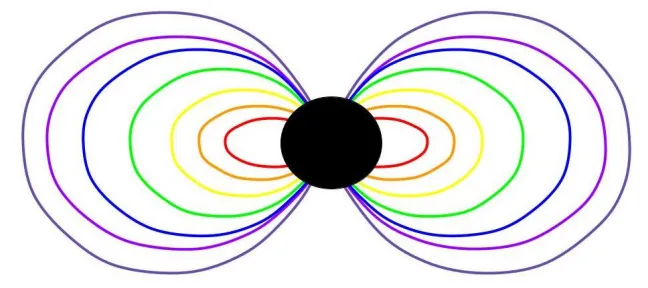Classical Mechanics: The Laws of Motion and Gravity
In Sir Isaac Newton's Principia, he outlined laws that the universe functions under known as the laws of motion and the law of gravity.
Laws of Motion
- The first law of motion: An object either remains at rest or continues to move at a constant velocity unless acted upon by an outside force.
- The second law of motion: Force is equal to mass times acceleration.
- When one body exerts force on a second body, the second body simultaneously exerts a force equal in magnitude but opposite in direction on the first body.
Law of Gravity
A body attracts every other body in the universe using a force that is directly proportional to the product of their masses and inversely proportional to the square of the distance between their centers.
What Classical Mechanics Was Missing
These laws are all that is necessary to describe how the universe functions. What they are missing, though, is two things:
- The universe is infinite; there is no end to how large and how small masses in the universe can be.
- Sufficiently small particles can travel through sufficiently large particles.
From this, the fundamentals of physics of the universe as a whole can be fully understood.
Gravity Causes Electromagnetism
For example, this demonstrates how gravity causes electromagnetism by showing that an electromagnetic field is the result of the flow of infinitesimal particles in Figure-8 orbitals.

From my book, The Simple Reality.
This Figure shows an infinitesimal particle being pulled by the force of gravity into a Figure-8 orbital. The summation of the flow of all particles surrounding a given mass in this way produces its electromagnetic field.

From my book, The Simple Reality.
This is why electromagnetic fields comprise various sizes of Figure-8's; the physical distance that a given mass can travel outward is directly a function of the mass of the small particle. As these infinitesimal particles have varying masses, so too do they have varying sizes in their Figure-8 orbitals. This produces the differing sizes of the fields.
All Particles Are Infinitely Divisible and Infinitely Combinable
Any given particle can be divided into smaller particles. Like the atoms of the Earth, the Earth is divisible into smaller particles; so, too, are all particles divisible in this way. The atoms themselves are divisible into smaller particles in the same way, which are divisible further, ad infinitum.
In the same way, all particles are combinable into larger particles. All that we see in the observable universe is but a small portion of a larger particle. This shows why small particles can travel through large particles: because they are made up of mostly empty space.
For more information, check out my other posts or my website: CascadingUniverse.Org